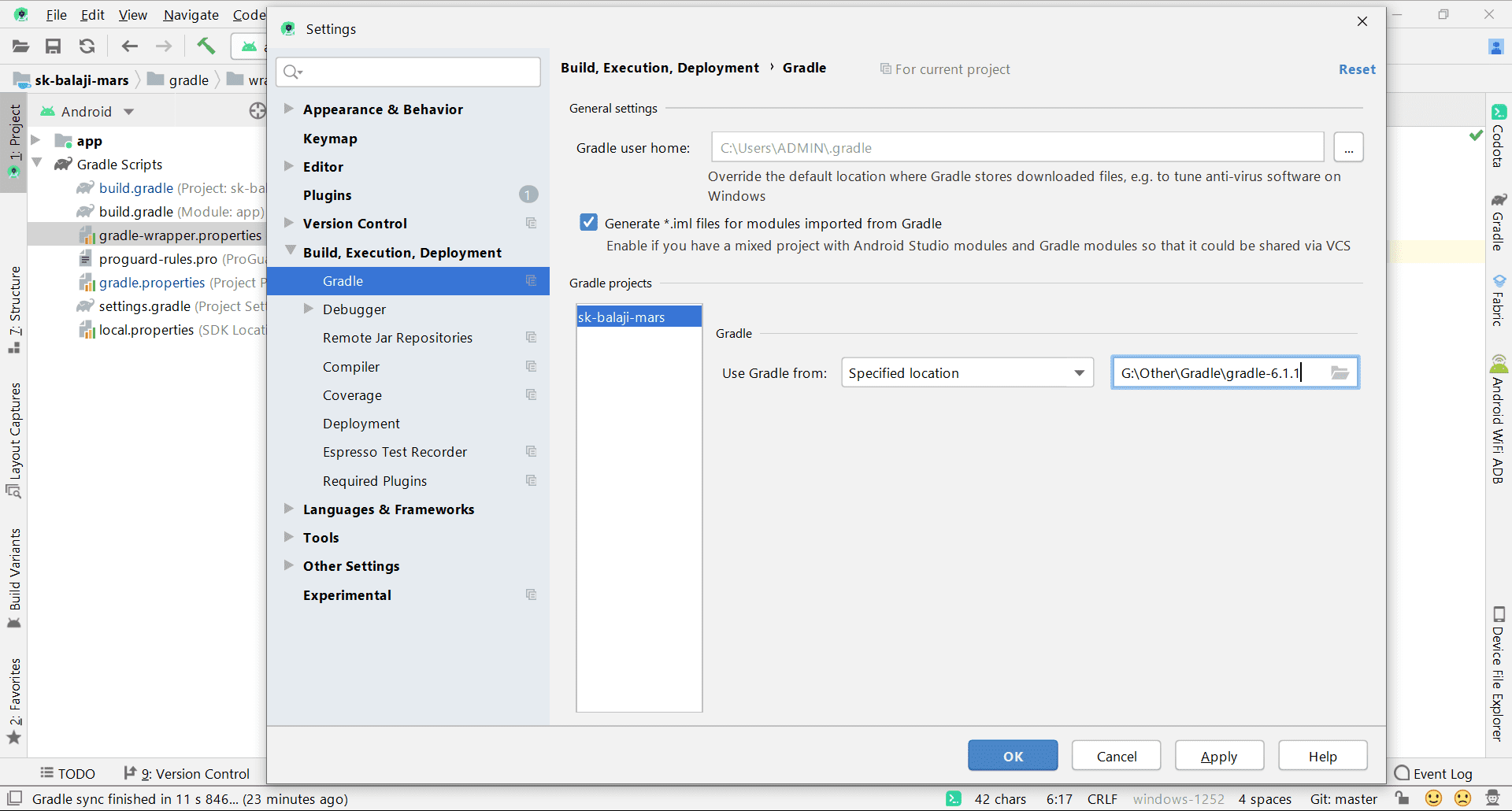

It prints the version number on the console, and other details as below. To check that everything is correct, open Command Prompt (or Terminal) and write gradle -version.

In both cases add GRADLE_HOME%\bin and save changes. If the window is different, be careful not to delete what is already in there, instead go to the end of the line and add a semi-column ( ). Return to System variables, find PATH in the list and click Edit. Under System Variables click New and enter GRADLE_HOME as the name, and the path to the extracted gradle zip and hit OK. On the right bottom, click Environmental Variables and the following window will open. This will open the System Properties window. Choose Advanced System Settings on the left panel. Windows users will need to edit Environmental Variables by right-clicking on My Computer and selecting Properties. GRADLE_HOME =DOWNLOAD_PATH/gradle export GRADLE_HOME Download the binary only distribution, extract the files in a directory of choice and add to your path. Head to the download page to get the latest release of. It comes bundled with Android Studio, so you can skip to Gradle Basics if you want.

To check if Java is installed in your system:.Check if Java is installed in your local system. Gradle - Installation Step 1 Verify JAVA Installation Step 2 Download Gradle Build File Step 3 Set Up Environment for Gradle Step 4 Verify the. There are four crucial steps to install Gradle: 1. Let's go on to see the way to install Gradle on to our local system in four simple steps. It includes the pros and curbs the cons of ANT and Maven. No matter how big or small an organization is, Gradle helps in building, automating, and delivering software at a better quality and at a faster pace. The tool supports groovy based Domain Specific Language over XML.

It is known to build automation on many programming languages like Scala, Java, Android, C/C++, and Groovy. Gradle is a build automation tool known for its ability to create software.


 0 kommentar(er)
0 kommentar(er)
